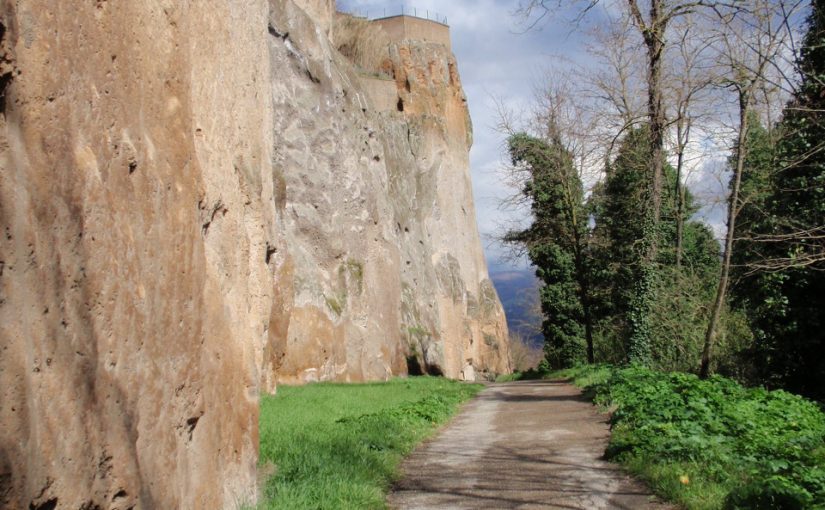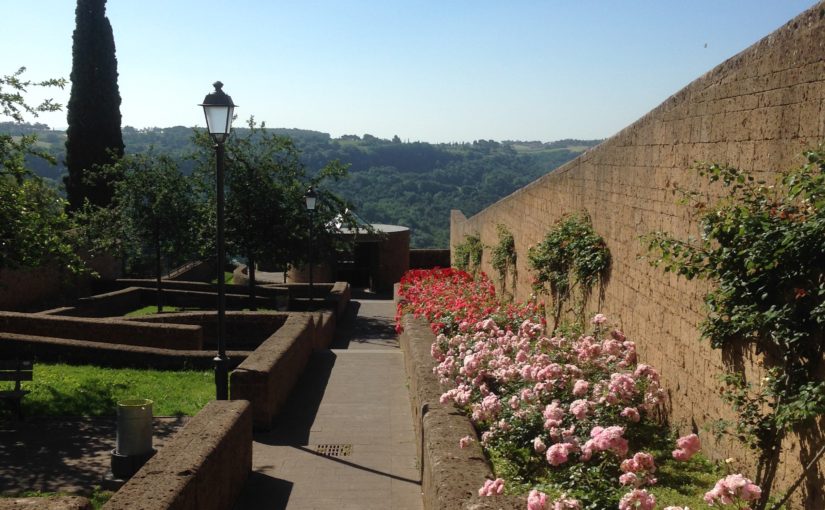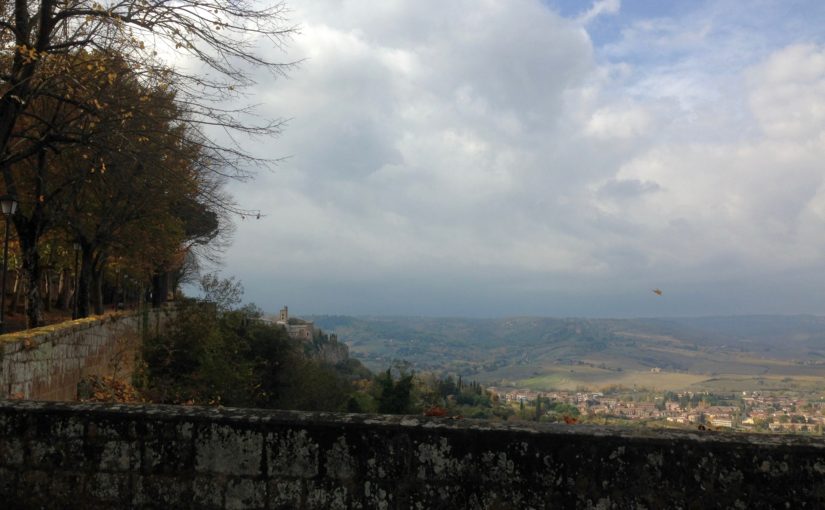While I was visiting my Croatian cousins in 1975, a neighbor who objected to the weekenders from Zagreb driving past his dining room twice a week as they came and went to their cottage, hung a gate off his house to stem this rush of one-car traffic that was ruining his illusion of solitude. The town went nuts. “He’s blocking a path,” my cousins explained, “paths are what connect us, what hold us together. Only crazy people block paths!” By the time I left a week later, the gate was down and the couple from Zagreb were once again free to use their driveway on Friday evening and early Monday morning. Sanity had prevailed.
Paths are what connect us. Paths can also represent habit, good or bad. A new path can be the difference between health and illness.
When, a couple of years ago, I finally sat down to begin work on the play, Colloquia, I was not at all sure I was up to the task of completing it; but over the next year I did, and at least I and a few friends thought it rather good. It eventually took on a life of its own and helped to celebrate the anniversary of an important event in Orvieto’s history, one made possible by two men who discovered paths that connected them.
When I sat down to write my first blogpost in November 2015, I had no idea of where it would lead me, or if I could follow. This one will be number 207 (and that is a surprise, even now). The journey has taken me down paths previously unexplored, and caused me to forge new ones.
When I first encountered the literature of the Parkinson’s Recovery Project, that it expected me to become aware of subtle channels – pathways of electrical and luminescent energy as described by Asian medicine – seemed an impossible challenge to meet. A few weeks later, and I am spontaneously and vividly aware of those channels at least a dozen times a day, and often for minutes at a time.
What we imagine as being beyond our grasps can, with a little persistence, become a path. Stop now, and recall a few examples of this same phenomenon in your life. It happens to everyone.
Just for our amusement, behold a roadmap.
My posture is still hunched, but it no longer feels pressed into that position; less of a stoop and more of a droop.
My gait is still unsteady and random, but there is a security in the legs that has been absent until this week.
There is often tension in the thigh muscles, but it goes away for hours at a time, now, where as before (like last week) it was a feature of my so-called physique.
The right arm, for four years the home of an internal or external tremor and annoying heaviness, has been mostly quiet for days (even in tremor’s favorite, secret positions), and today the weight has lifted. Sometimes the arm even swings when I walk.
I’ve been going to Michele (or he has been coming to me) for shiatsu on a regular schedule for almost two years now – barring lockdowns – and irregularly for two years before that. After last Wednesday’s very undramatic session he remarked that he had never in all that time found my body so relaxed. I felt it, too.
And all this is framed within a reminder from Janice (at the Project) that it is ten weeks after ceasing medication before withdrawals end; for me that’s mid-May, another reason to look forward to the glories of spring. A spring, I hope, that will include a walk or several on a woodsy trail.
Still, when I’m asked how I feel, I fear saying “better” with too much confidence. I suppose I do the same when someone asks how a writing project is coming. Insurance is a human concept. It is also a way of hanging a gate across a path.
I did find a rather startling internal gate this week; not something I’d been totally unaware of, but the habit fell under a strong spot light. Whenever I recall a particular embarrassment, something I did that was stupid or insensitive, or a moment of arrogance or selfishness, something collapses and I say to myself “I wish I could die and get it over with”. Not exactly an affirmation, and a nasty way of returning to a state of numbness in lieu of celebrating my imperfect humanity – and my survival as a living being. It is of value, I suppose, to recognize the idiotic things I’ve done or said, but there is no reason to punish myself over them on a daily basis. And with every choice to forgive, a surge of electrical energy surges up my spine and into my head. Learning to be kind and loving to myself is an integral part of healing. Those paths must be maintained and routinely cleared to allow for movement.
And so I creep forward. It’s not easy opening myself to patterns and concepts foreign to my western mentality, but it is always worth the effort. And as a friend recently pointed out, I’m doing this for my own health – my own recovery from a condition that conventional thought routinely describes as incurable – but each effort I make is also an effort on behalf of a community of people with like symptoms.
My father is long gone from this world, and although I cannot do his work for him, my efforts benefit him as well – to heal his Parkinson’s in memory. My cousin Shirley passed into a reality beyond Parkinson’s the day before I discovered a similar reality in the form of the Recovery Project on this side of the gate. Their company has encouraged me to move forward on a remarkable journey towards an option that was not offered them. And as I begin to know what to look for, I see that the way is well-marked and moving on its twisted course can become a source of joy and wonder.
If, as my cousins told me, paths are what connect us, then movement along them is the essence of life.


